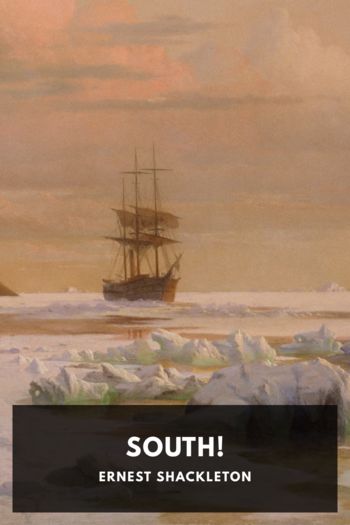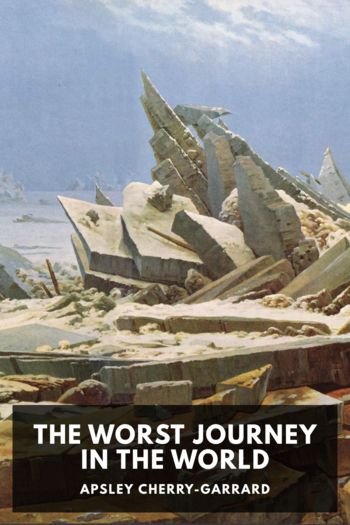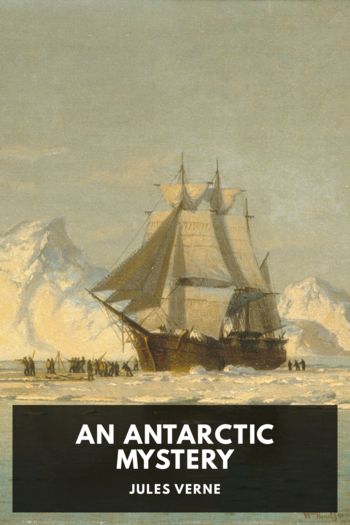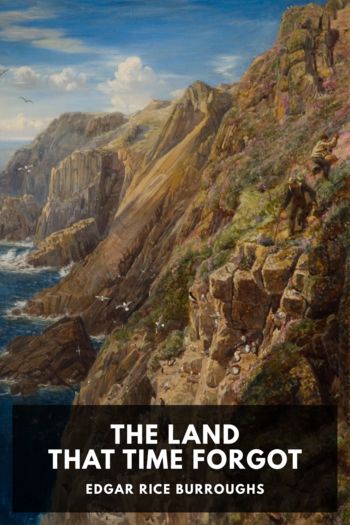South!, Ernest Shackleton [good books to read in english TXT] 📗

- Author: Ernest Shackleton
Book online «South!, Ernest Shackleton [good books to read in english TXT] 📗». Author Ernest Shackleton
“Cape Evans, Ross Island, July 30, 1915.
“On the 23rd March, 1915, a party consisting of Spencer-Smith, Richards, and Gaze was landed at Cape Evans Hut in my charge. Spencer-Smith received independent instructions to devote his time exclusively to photography. I was verbally instructed that the main duty of the party was to obtain a supply of seals for food and fuel. Scientific work was also to be carried on.
“Meteorological instruments were at once installed, and experiments were instituted on copper electrical thermometers in order to supplement our meagre supply of instruments and enable observations of earth, ice, and sea temperatures to be made. Other experimental work was carried on, and the whole of the time of the scientific members of the party was occupied. All seals seen were secured. On one or two occasions the members of the shore party were summoned to work on board ship.
“In general the weather was unsettled, blizzards occurring frequently and interrupting communication with the ship across the ice. Only small, indispensable supplies of stores and no clothes were issued to the party on shore. Only part of the scientific equipment was able to be transferred to the shore, and the necessity to obtain that prevented some members of the party landing all their personal gear.
“The ship was moored stern on to the shore, at first well over one hundred yards from it. There were two anchors out ahead and the vessel was made fast to two others sunk in the ground ashore by seven wires. The strain on the wires was kept constant by tightening up from time to time such as became slack, and easing cables forward, and in this way the ship was brought much closer inshore. A cable was now run out to the south anchor ashore, passed onboard through a fairlead under the port end of the bridge, and made fast to bollards forward. Subsequent strain due to ice and wind pressure on the ship broke three of the wires. Though I believe it was considered on board that the ship was secure, there was still considerable anxiety felt. The anchors had held badly before, and the power of the ice-pressure on the ship was uncomfortably obvious.
“Since the ship had been moored the bay had frequently frozen over, and the ice had as frequently gone out on account of blizzards. The ice does not always go out before the wind has passed its maximum. It depends on the state of tides and currents; for the sea-ice has been seen more than once to go out bodily when a blizzard had almost completely calmed down.
“On the 6th May the ice was in and people passed freely between the shore and the ship. At 11 p.m. the wind was south, backing to southeast, and blew at forty miles per hour. The ship was still in her place. At 3 a.m. on the 7th the wind had not increased to any extent, but ice and ship had gone. As she was not seen to go we are unable to say whether the vessel was damaged. The shore end of the cable was bent twice sharply, and the wires were loose. On the afternoon of the 7th the weather cleared somewhat, but nothing was seen of the ship. The blizzard only lasted some twelve hours. Next day the wind became northerly, but on the 10th there was blowing the fiercest blizzard we have so far experienced from the southeast. Nothing has since been seen or heard of the ship, though a lookout was kept.
“Immediately the ship went as accurate an inventory as possible of all stores ashore was made, and the rate of consumption of foodstuffs so regulated that they would last ten men for not less than one hundred weeks. Coal had already been used with the utmost economy. Little could be done to cut down the consumption, but the transference to the neighbourhood of the hut of such of the coal landed previously by the ship as was not lost was pushed on. Meat also was found to be very short; it was obvious that neither it nor coal could be made to last two years, but an evidently necessary step in the ensuing summer would be the ensuring of an adequate supply of meat and blubber, for obtaining which the winter presented little opportunity. Meat and coal were, therefore, used with this consideration in mind, as required but as carefully as possible.
“A. Stevens.”
The men ashore did not at once abandon hope of the ship returning before the Sound froze firmly. New ice formed on the sea whenever the weather was calm, and it had been broken up and taken out many times by the blizzards. During the next few days eager eyes looked seaward through the dim twilight of noon, but the sea was covered with a dense black mist and nothing was visible. A northerly wind sprang up on May 8 and continued for a few hours, but it brought no sign of the ship, and when on May 10 the most violent blizzard yet experienced by the party commenced, hope grew slender. The gale continued for





Comments (0)